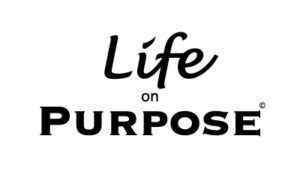A Life Purpose Statement is a succinct and specific description of your “why”, your purpose for being on this earth. It describes your reason for getting out of bed in the morning. It translates who you are into what you do. It converts your values into your actions.
Your Life Purpose Statement serves as a year-by-year, day-by-day, minute-by-minute signpost to help you prioritize opportunities and responsibilities in your life. In 7 Habits, Covey writes about distinguishing between the urgent and the important. Your Life Purpose Statement helps you identify your “important.” It sets direction, helps determine goals, and defines action.
For a person of faith, we believe that God has designed and developed us each uniquely with gifts and talents that best enable us to serve Him and the world in certain ways. The process of developing our Life Purpose Statement involves examining who we are and finding the purpose for which we have been prepared. Most often, when we understand our purpose, it is the path that energizes us and brings us satisfaction and contentment. It aligns what we do with who we are.
A Life Purpose Statement differs slightly from a Life Vision Statement. You might choose to think of them as one, but in our process the Life Purpose Statement is designed to guide the day-to-day while the Life Vision Statement defines our lifetime goals or objectives.
Developing a life purpose statement is seldom a one and done process. It requires a great deal of thought and introspection. And it can evolve over time.
Here are the major steps in writing your purpose statement:
- Identify your values and passion. The Core Values process is a precursor as it forces us to identify the most important values that drive us. Other parts of this step might be thinking about such things as your history and examining where you have found joy and fulfillment.
- Identify your strengths and skills. Think about how you have been gifted and where you are energized and most in your element. Some people choose to do a personal SWOT analysis. Gathering input from people who know you well can be helpful in this entire process, but especially in this step.
- Begin to think about desired results. This might be lifetime results (as in the Life Vision Statement) but more appropriate here are the results that you have seen and hope to see as you live out your Life Plan.
- Begin an iterative process of drafting and refining a Life Purpose Statement that is probably one sentence but contains your what, how, and why. In other words, what is your purpose, how are you equipped or being developed for this, and how will you impact the world, a certain field or area, or certain people or types of people, etc.
As with all of the Life Plan, your Life Purpose Statement (or Mission Statement) will require much thought to develop. Then it must become ingrained into your mind and life. And it must be periodically examined as both a reminder and an opportunity to refine and evolve it.
This article is part of a series of articles describing the Life Planning process. To see the other articles in the series, click here. While individuals are welcome to complete this process on their own, partnering with a Life Coach is often more effective. Please contact us for more information.


Add your comment